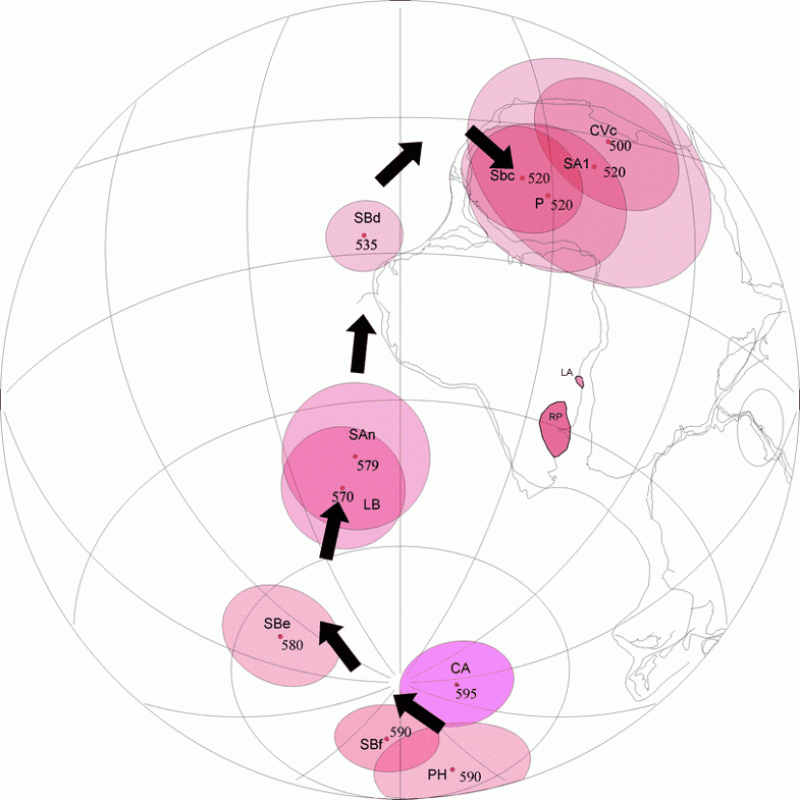Libro: Geology of Southwest Gondwana

Capítulo 1: The Assembly of Western Gondwana: Reconstruction Based on Paleomagnetic Data
Autor: Augusto E. Rapalini
Abstract: In the last two decades some consensus has been reached with regard to the assembly of Gondwana being a long and complex process. Reliable paleomagnetic data are essential to determine the paleogeographic and kinematic evolution of each Gondwana-forming block during its assembly as well as to place chronological constraints on such a process. A review of paleomagnetic data from Western Gondwana blocks indicates that the available Ediacaran to Cambrian database is still scarce and uneven for different cratons, despite clear improvement in the quantity and quality of paleomagnetic information in recent decades. The main constraints placed by the available information are as follows:
-
The Río de la Plata and Congo–Sao Francisco cratons were likely already attached by mid-Ediacaran times (c. 575 Ma) and not part of Rodinia.
-
The Arabian-Nubian Shield was part of proto-Gondwana by 550 Ma and probably even earlier.
-
Paleomagnetic constraints are virtually absent for the Kalahari craton.
-
Amazonia and West Africa were probably still part of Rodinia and attached to eastern Laurentia by the Early Ediacaran (c. 615 Ma), suggesting that a large Ediacaran Clymene Ocean existed between Amazonia and the Congo–Sao Francisco–Río de la Plata block.
-
The age of Amazonia amalgamation is poorly constrained by paleomagnetic data as ≥525 Ma.
-
The accretion of Eastern Gondwana blocks probably occurred in the latest Ediacaran-Cambrian times as suggested by the apparent polar wander path of Australia.

